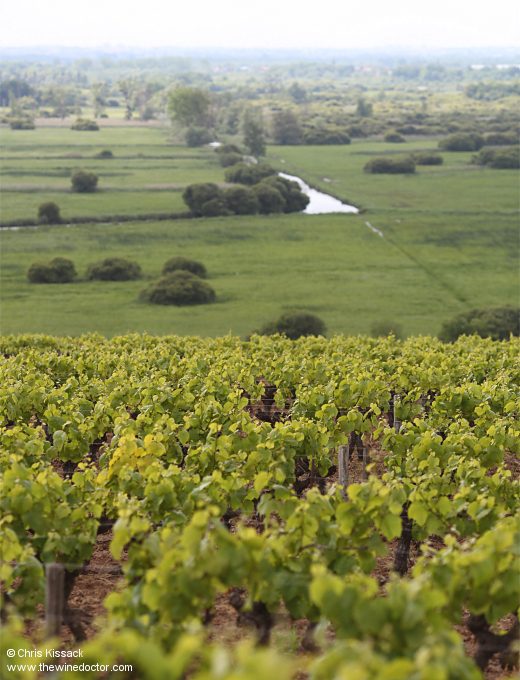Goulaine: The Noble Marais
That the Muscadet Sèvre et Maine appellation is a wine region shaped by its rivers should by now, especially if you have arrived here after reading my other guides to the crus communaux of Muscadet, be clear. Here in Goulaine the relationship between water and vine is taken to a new extreme, as this is a cru that has grown up not along the banks of a river, akin to Château-Thébaud or Mouzillon-Tillières, but which instead teeters on the peripheries of a marshy body of water, the Marais de Goulaine.
The Marais de Goulaine is a remarkable landscape, one which changes greatly with the passing of the seasons. It is situated in a depression directly east of the city of Nantes, south of the course of the Loire, in the northernmost corner of the Muscadet Sèvre et Maine vineyard. Fed by the many rivers and streams which flow in from the east, its status as land, marsh or lake depends very much on the volume of water these streams carry. In the summer months the marsh dries up, its waters draining via the Goulaine, its central river, into the Loire. In winter the volume of water flowing in from the east increases, and the land is saturated once more. But it is never completely flooded; even in the depths of winter you can still make out the lines of the many ditches, channels and canals which criss-cross it.
The first time I set eyes on the Marais de Goulaine it was during the summer months, and it was thus quite dry. I had ascended the Butte de la Roche, one of the many rocky outcrops which overlook the marsh (and one for which many local vignerons have some reverence, the vineyards here being highly prized). The vast plain which stretched out before me (pictured below – the body of water is the Goulaine, turning a corner as it heads for the Loire) was lush and green, criss-crossed by lines of verdant shrubs and trees in full leaf. At the time I thought these lines were field boundaries, but I later realised it was the local vegetation marking out the drainage channels. Even in its dry state, it was an impressive sight; the image below does not convey its huge expanse – all 1,500 hectares of it – very well.
At the time I was in the region to make some visits, and taste some wines, and of course I was up on the Butte de la Roche not to inspect the marsh, but to check out the butte’s many vineyards. Here on a spear of serpentinite and amphibolite, the soils peppered with green chunks of these ophiolite rocks, the vines hugged the ground, trained low in the Nantais style. It is perhaps a surprise that vines grow here at all, as these ophiolites degrade into rather inhospitable soils, and most agriculteurs would rather not plant on them. And yet Vitis vinifera seems to take it all in its stride.

